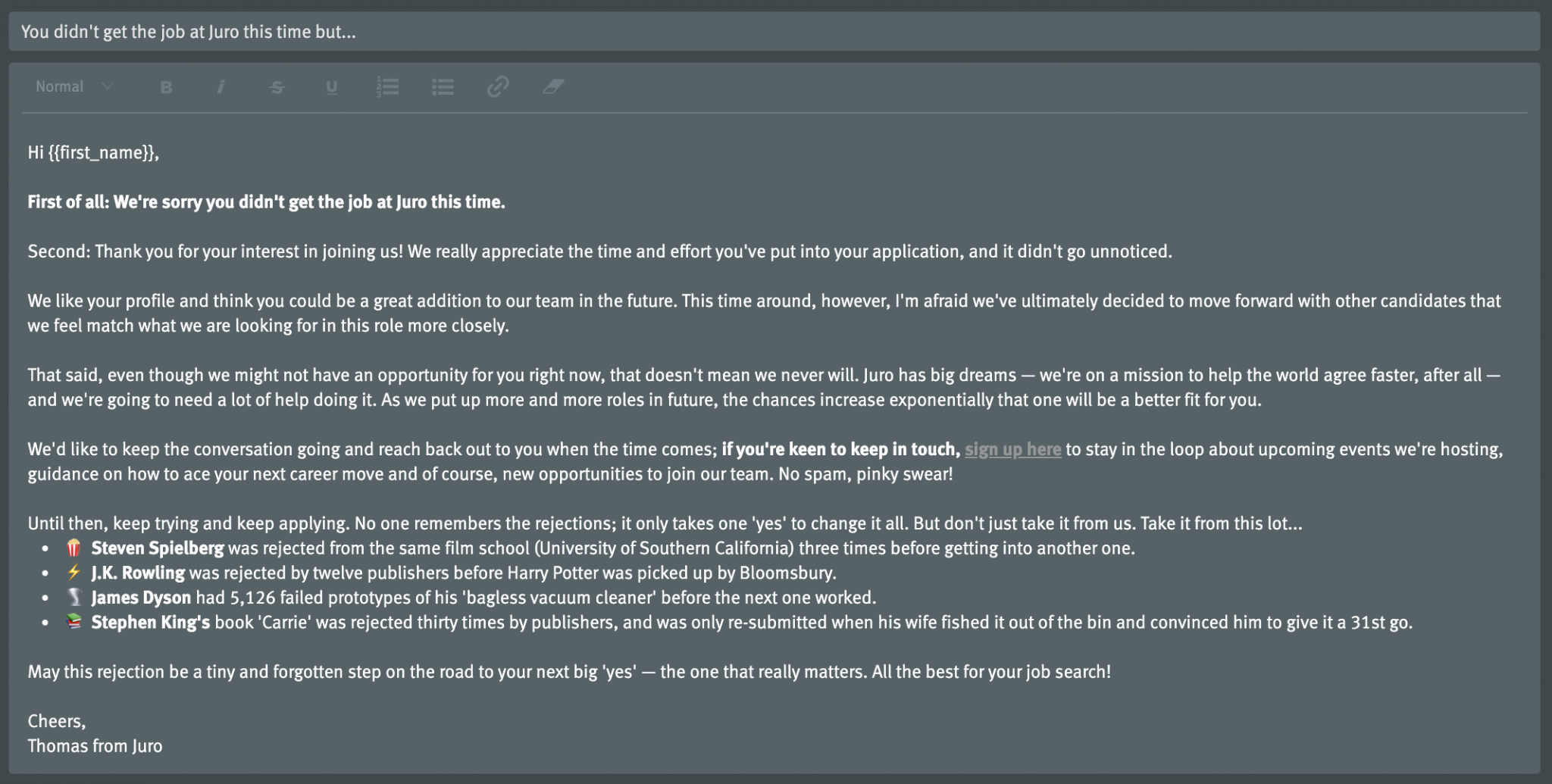I’ve been fortunate enough to manage talent in both large businesses and smaller scale-ups, and during this time, I’ve been able to hone the hiring process and pick up on common patterns.
One of the most common mistakes I see around the hiring process is how teams treat it like a pipeline instead of a continuous cycle. An example process could look like this: Candidates apply for a job, go through the talent screening, do the first interview and then the final interview, and undergo a reference check before the employer sends him or her the offer letter. But at any of these stages, if the employer rejects a candidate, he or she is often no longer in the company’s orbit.
This is the structure most businesses adopt when finding and securing new talent, and only recently are companies changing the way they approach this process.
Hiring as a Funnel
When we look at sales, marketing, and customer success teams, what do we notice about the way they treat their prospects or customers?
There’s never a “black and white” response to interest and engagement. Customers who consider churning aren’t left to their own devices and forgotten by CS teams. Prospects who aren’t ready to buy the product yet aren’t ignored by sales teams.
Instead, CS dedicates extra time toward dissatisfied customers, making sure they’re up to speed with the product. Sales and marketing teams nurture prospects so the business can pick up later down the line and always keep the prospects on their radar.
With the hiring process, teams in many instances consider nurturing only if a candidate rejects the offer; it’s not a courtesy talent teams extend to the top of the pipeline—CV review, phone screens, and so on. That means there’s a really narrow pool from which people and talent teams can reconnect with potential candidates in the future.
Hiring as a Cycle
It’s understandable if a nurturing process doesn’t exist—competition is high, especially as a business scales and becomes more successful. Talent teams can get hundreds of applications per role, and sifting through the CVs and making decisions based on a simple “yes or no” structure is much easier than having a third “nurture” category, which can slow down the hiring engine. It’s easy to think about the short-term win of hiring quickly over the long term, but that long term becomes exponentially beneficial for the business and will make hiring easier in the long run by building up an audience of quality returnees and new inbound candidates.
The easiest way to adopt this is to add a third stage between acceptance and rejection. The question we ask ourselves at Juro when deciding to nurture applicants is: Would we consider these candidates for another role in the future?
If the answer is yes, we want to keep them in our orbit, and we add them into our talent pool, which means two things:
- We add candidates into a separate bucket in our applicant tracking system and tag them with a role we think they’d be suitable for in the future so it’s easy to locate and contact them when we have new vacancies.
- We invite them to subscribe to our quarterly talent newsletter, which contains future roles and, more importantly, valuable resources to help them in their job search.
Through this second step, we create and scale a small community of talented individuals who we may end up hiring in the future. Most importantly, rather than just sending out reminders to our careers page, we take the opportunity to share useful information (like any good marketing newsletter).
How Can Companies Get Started?
Transforming a hiring pipeline into a hiring cycle sounds daunting, but it only takes a few simple steps.
1. Create a rule between “accepted” and “rejected.” This potential category acts as a buffer and allows people and talent teams to make an informed decision about where a candidate should end up. And this third category adds value in the long run.
2. Make sure your applicant tracking system allows for creating a separate category. Most have the ability to add custom buckets, and automating the workflow makes it much easier to implement this extra stage without taking up too much time.
3. Create e-mail templates for nurtured candidates. Obviously, even though you’re rejecting them from the job they applied for, you don’t want to push them away entirely! So, make sure your e-mail is kind and professional and offers them the opportunity to keep in touch through your talent pool.
Here’s what we send to unsuccessful candidates:

4. Make sure you add value to the people you’re nurturing. Sharing open roles at the business is important, but more than that, people and talent teams need to share valuable resources that can help people in their continued job search. It also has the added effect of reaching a wider audience by word of mouth if the content of what you share (e.g., through a newsletter or a Slack community) is of a high quality.
Changing the hiring process into a cycle instead of a funnel means companies can build and grow a community, which allows talent teams to easily reconnect with candidates who seem more suitable for future roles. It also benefits the wider business, helping it maintain a strong, positive reputation with everyone—and not just the candidates who get the job!
Thomas Forstner is People and Talent Lead at Juro.
The post Hiring Is a Cycle, Not a Funnel appeared first on HR Daily Advisor.
